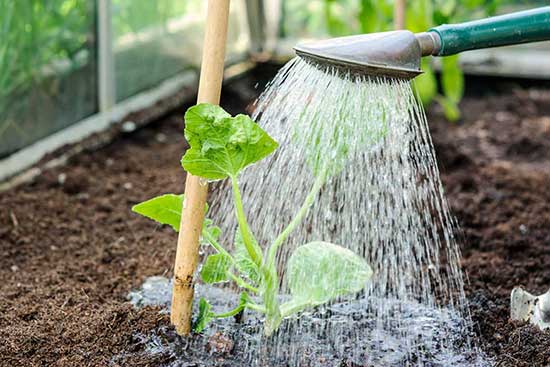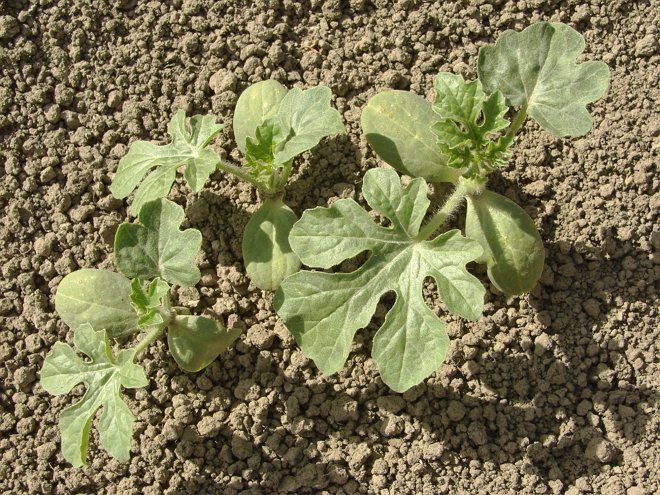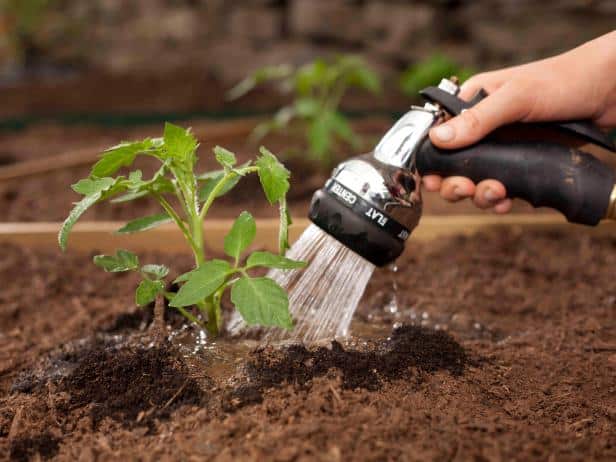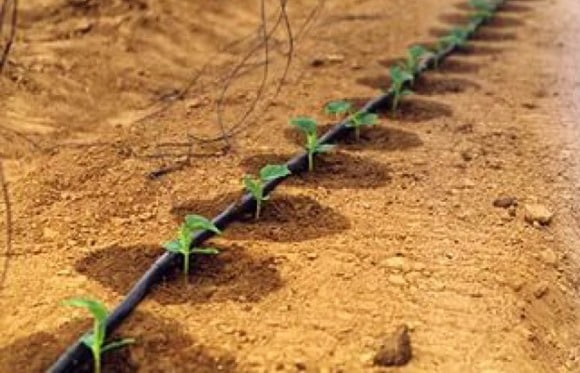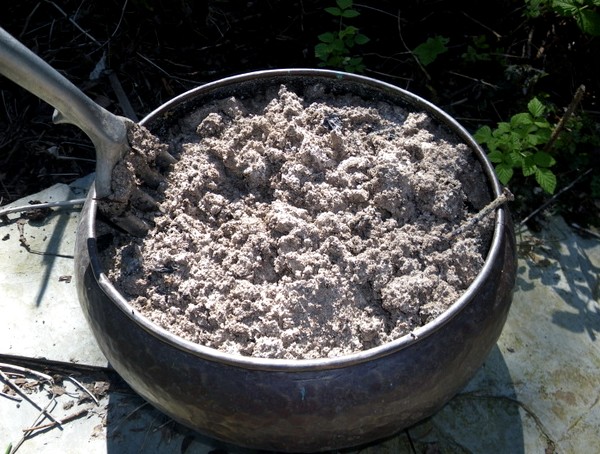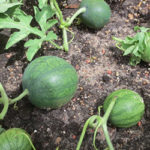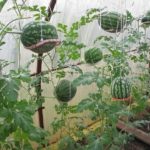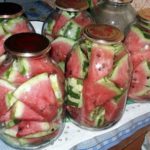Watermelon is considered a common summer delicacy, grown by many people who own summer cottages or country houses. Before you start planting and growing melons, you should familiarize yourself with how often you need to water watermelons in open ground.
- Features of growing watermelons
- Dependence of irrigation frequency on soil type
- Rules for watering in greenhouses and open ground
- From planting seedlings to flowering
- During the ripening period
- Benefits of drip irrigation
- How to feed watermelons and how often to do it
- Determining the ripeness of a watermelon
- Harvesting
- Conclusion
Features of growing watermelons
To get a good harvest, you need to familiarize yourself in advance with the peculiarities of growing melons. Before you start planting, you need to determine the most suitable time for planting watermelon seeds. Gardeners advise sowing at the end of May, when the top layer of soil is well warmed up. You can plant seed until June 20-25.
It is difficult to determine the exact planting dates for watermelons, as they depend on the climate. In the southern regions they try to finish planting early, before the onset of the summer heat. In the northern regions, due to low temperatures, growing watermelon seedlings in open ground They don’t do it until summer.
The seeds are planted to a depth of about 5-8 centimeters so that in the future the crops will germinate faster. In each hole you need to plant not one seed, but several seeds at once.
Planted plants need:
- Fertilizers. Melon crops must be periodically fed with mineral and organic fertilizers, which can increase yield by 35-40%.
- Stepsoning. When growing in the garden, the side canes of all bushes are regularly torn off. This procedure is carried out to accelerate the ripening of watermelon berries and improve yield.
- Irrigation. Some believe that this crop is not demanding on soil moisture, so it should be watered rarely. However, this opinion is erroneous, since without soil irrigation the number of fruits decreases and their taste deteriorates.
Dependence of irrigation frequency on soil type
Many gardeners are interested in whether there is a relationship between the frequency of soil irrigation and its variety.
To understand this, you need to familiarize yourself in more detail with the characteristics of different types of soils:
- Sandy loam and sandy.Often gardeners give preference to areas where sandy and sandy loam soils predominate. Their distinguishing feature is that they have high friability. Thanks to this, such soil is quickly saturated with oxygen and absorbs moisture well. Areas with such soils need to be watered much more often, as the water quickly evaporates and the soil dries out.
- Clayey. Soils of this type contain many capillaries responsible for transporting moisture. However, despite this, clay soil absorbs water poorly, which is why it remains in the upper layers for a long time. Therefore, in order for watermelons to grow well in such soil, you will not have to water very often. It is enough to moisturize the area 1-2 times a week.
- Medium-heavy. Such soils consist of almost 80% dust particles and 20% clay. Moisture does not stay in medium-heavy soils for very long, so you will have to moisten the soil more often.
Rules for watering in greenhouses and open ground
It is recommended that you familiarize yourself with the rules for watering melons and melons in advance so that no problems arise when irrigating the soil.
From planting seedlings to flowering
The plant needs to be watered for the first time a week and a half after planting in the ground. For irrigation, water heated to 20-22 degrees is used. Cold liquid is contraindicated for watermelons, as it can damage the root system. Water is carefully poured under the root so that moisture particles do not fall on the surface of the leaves. Many people are interested in how much liquid is used when watering young seedlings. Each bush requires at least five liters of water. If after such watering the soil dries out quickly, the volume of liquid used is increased to 7-8 liters.
In sunny weather, it is enough to irrigate twice a week.On cloudy days, the number of waterings is reduced to once every 15 days.
During the ripening period
Proper watering during flowering and fruit ripening has a positive effect on the quantity and quality of the harvest. During the fruiting period, irrigation is carried out at least twice a week. At the same time, more than 10-11 liters of water are consumed for each seedling. This amount is enough to moisten the top layer of soil.
If the bushes are grown without tying, and the fruits lie on the ground, straw is placed under them.
It will protect watermelons from moisture and prevent them from rotting. When the crop is fully ripe, irrigation is stopped completely, since the plants no longer need moisture.
Benefits of drip irrigation
Many gardeners who grow watermelons use drip irrigation techniques. In this case, moisture penetrates directly to the root system of the seedlings. The popularity of this method is due to the fact that it has many advantages over conventional irrigation.
To organize a drip system, hoses are laid out along the entire site, with the help of which each bush is provided with access to water. The advantages of this technique include the fact that it helps maintain soil moisture, since water will constantly flow to the root system of the plants.
When using drip irrigation, liquid consumption is reduced significantly, since water does not evaporate from the stems or from the ground, but penetrates directly into the roots. Also, with this method of moistening the soil, water will not be able to get on the leaves of watermelons and wash off the protective solution located on their surface.
How to feed watermelons and how often to do it
Melon feeding must be carried out when growing watermelons, since without a sufficient amount of nutritional components it is impossible to get a good harvest.
Among gardeners, adding manure and fertilizer made from wood ash or superphosphate to the soil is popular.
Chicken manure is also considered effective, as it can increase productivity significantly. Mineral and organic fertilizers are added to the soil at least once a month. To prevent the development of diseases and the appearance of weeds, a special whey liquid is used. To create a solution, mix 100 milliliters of whey in a liter of warm water and leave for 1-2 hours. Then the liquid is stirred and used to spray watermelon leaves and stems. The serum cannot be used in its pure form, as it can damage the leaves.
Determining the ripeness of a watermelon
Before harvesting, you need to familiarize yourself with the features of determining the degree of ripening of watermelon berries. Ripe fruits differ from unripe ones by their elongated and rounded shape, which looks like an oblong ball. The weight of one watermelon should be at least 8-10 kilograms. If the fruit is too light, it means it is not fully ripe. Determine the ripeness of watermelons you can look at their peel, which is responsible for protecting the pulp. There should be no cracks or mechanical damage on its surface.
When watermelon berries are completely ripe, moisture stops flowing to them, which leads to hard skin. Therefore, all ripe fruits must be firm.
To check the hardness and density of the peel, you can try piercing it with your fingernail. It is impossible to pierce ripe fruits with fingernails.The color of the peel can also tell a lot about the degree of ripening of the berries. Ripe watermelons are covered with dark stripes. Moreover, on the surface of unripe fruits such stripes are practically invisible. The easiest way to check the ripeness of melons is by their tail. It should be dry and yellowish. A green tail indicates the immaturity of the crop.
Harvesting
Watermelons begin to ripen in August, so many begin harvesting in late summer or early September. The exact timing of fruit harvesting depends on the characteristics of the variety being grown. Some early ripening melons ripen in mid-July and have to be harvested earlier. The fruits are harvested gradually as they ripen.
To harvest watermelons from one bush, 1-2 days are enough. When harvesting watermelon berries, use a regular knife or sharpened scissors, with which you can cut off the tail. You cannot pick it by hand, so as not to accidentally tear off the stalk. The harvested crop is transferred to a cool room with a temperature of about 10-12 degrees for further storage. In such conditions, watermelons are stored for 1-2 months.
Conclusion
Some people who have recently started growing watermelons in their garden have difficulty watering them. Therefore, it is recommended to familiarize yourself in advance with all the features of soil irrigation when growing melons.

